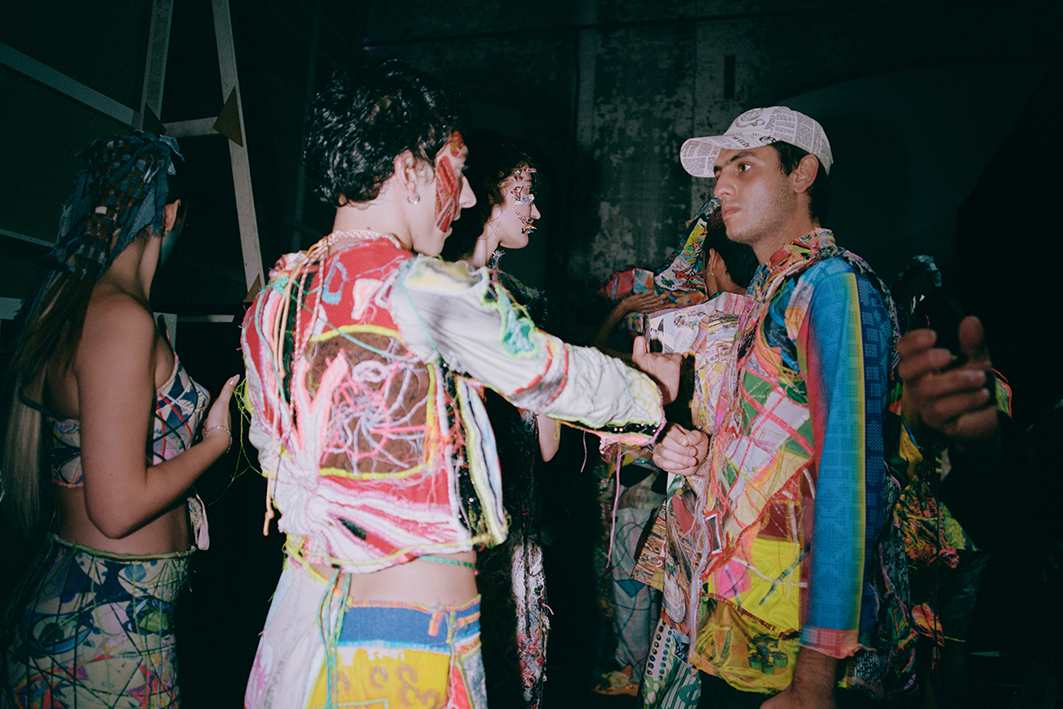
It was one of the highlights of AAFW when Manahou Mackay gracefully stormed down the runway wearing the opening look for Iordanes Spyridon Gogos endlessly joyful debut show. A psychedelic racer-back dress created in collaboration with Amy Baran, finished with a fluid wire hem, emerging amongst neon trojan horses to a remix of Aqua's Lollipop by Byron Spencer, set the tone for the show. Two weeks on, we are still thinking about the show - a celebration of art, concepts, colour and character, the burning question on our lips, is to know what's next for the promising young designer.
For those who know Gogos' work, it can be found in the form of minimal steel furniture in Dion Lee stores and on sets of shoots. Wearable art, however, was a slightly more recent foray for the Parsons educated multidisciplinary artist, and upon deciding to send in an application to have a show at AAFW, things moved very fast for Gogos.
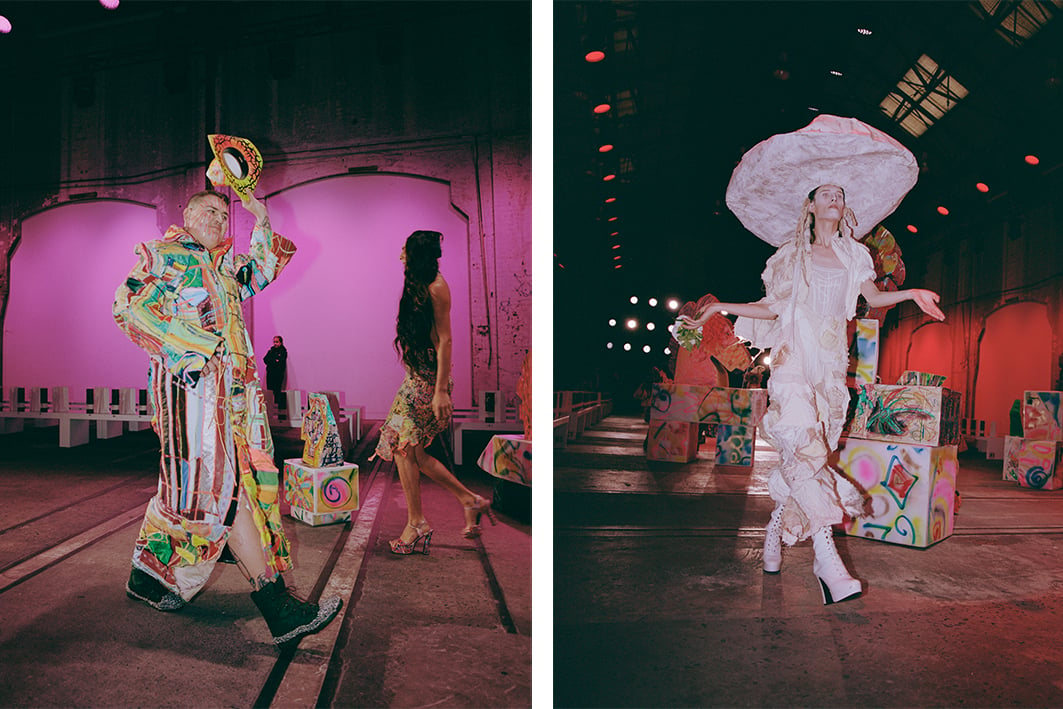
"If you don't get accepted into fashion week, they don't let you know, they just don't reply. You just sit there like a log hoping someone contacts you. And then they called me up and they're like we want you to do like a runway. It was crazy. Like, I've made three pieces this year," he tells us. "I didn't know what I was doing, so I called up heaps of people that I knew and I was like, I'm doing a runway. We're gonna put some music on and just walk. And it just fuckin' went off the chain. It started off with a little group of artists which I posted on Instagram and said, anyone who wants to be in a dynamic opportunity, let me know."
And off the chain it went. Amid a sea of carefully crocheted garments adorned with glass droplets, printed lycra, and patch-worked corsets, coats and ball gowns, Gogos, and the 25 different artists he collaborated with for the show, created a moment in time for Australian fashion. One with a future that not only looks very bright indeed, but safe for people of all identities to exist within.
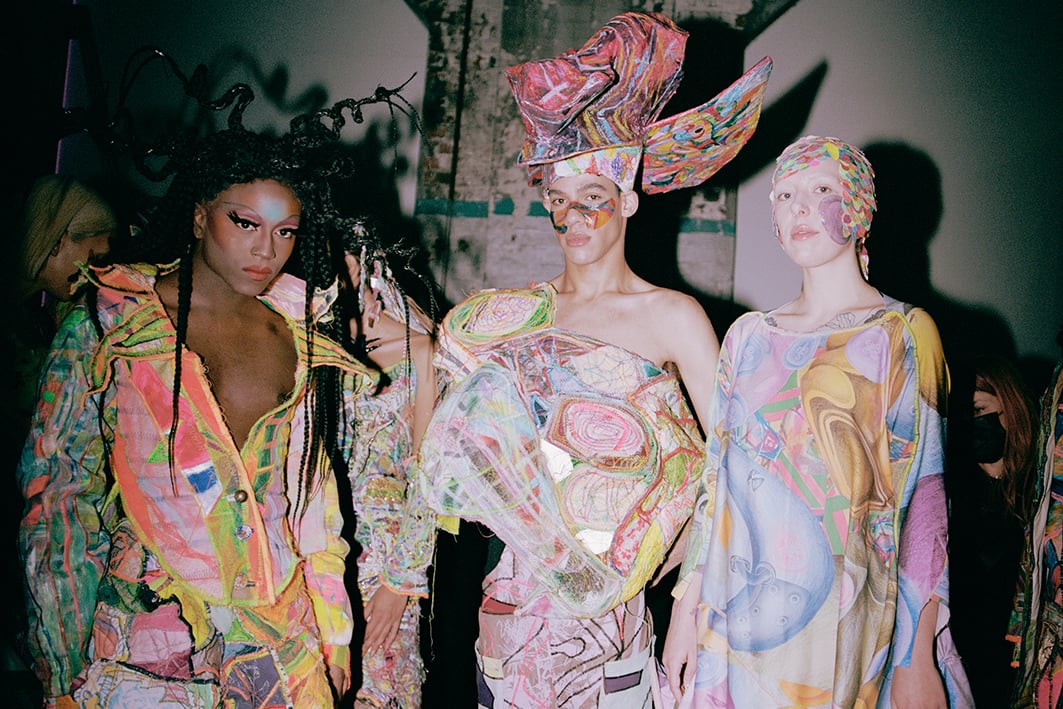
"People talk about inspiration versus motivation. And I feel like I'm more motivated in my designs. A lot of designers talk about things like the sun which is meant to capture the light which is nice, but I don't care about that," he says. "I've never cared about that. I'm motivated by the idea of facilitating differentiating perceptions of people. I wanted the edges to be built out and clean. And for it to look like, this is an artist, but we're not going to give the industry what they expected from us." He notes, which, upon first glance of the show, rings true to the sentiment of the work. The work which is detailed in a different way. It is meticulous and fun and dramatic and detail oriented. What Gogos' wanted to – did prove, was that it is possible to achieve it all when you're not focussing on what the industry wants from you.
"It was about having fun. And just proving ourselves like I've proved myself for seven years. And this was the first time in my life that I, alongside other people, thought, maybe we don't have anything to prove anymore. Maybe we can actually exist in this design space in a collected way where we can do things with intention and not have to walk away feeling like next year, we have to raise the bar. It's like, 'No, we don't have to use our labour and our bodies in that way,'" he says. "We can actually just like breathe and acknowledge that we actually are artists that are respected. I think that is really motivating. I wanted to embrace every artist because these people should exist in this space."
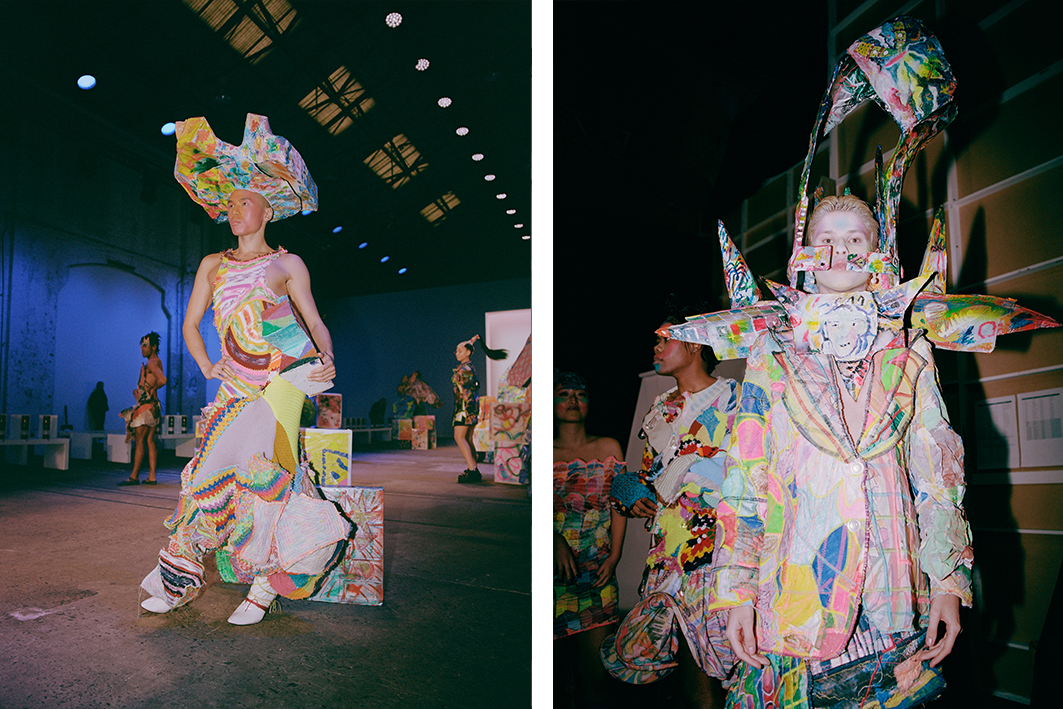
It was the kind of facilitation of creativity that the industry, one that is so often gate kept by the straight, white, and able bodied, has been crying out for for so long. Gogos' not only carved out a space for the artists involved, but those who wore the designs too - a space that is so often moderated in ways that sacrifice both creative integrity and freedom of expression.
It manifested as the opposite of tokenism. When I spoke with Gogos about the casting process, he expressed that there was no casting process - so to speak. It was always grounded in the people who were excited about the pieces, who he worked with from the beginning to create pieces that they felt best in.
"When people went down that runway, they knew what this brand was, they knew who I was. They knew how they fit into it. They knew that the piece they were wearing was something that was actually created for them, that fitted them, that they had a say in." He explains, "I would ask a lot of the models multiple times by email and in person, saying, do you feel comfortable? Is this what your mood is? Do you want to wear a dress? Do you want to wear a suit? What is going to benefit you? So there wasn't an ego on the runway, there was just presence."
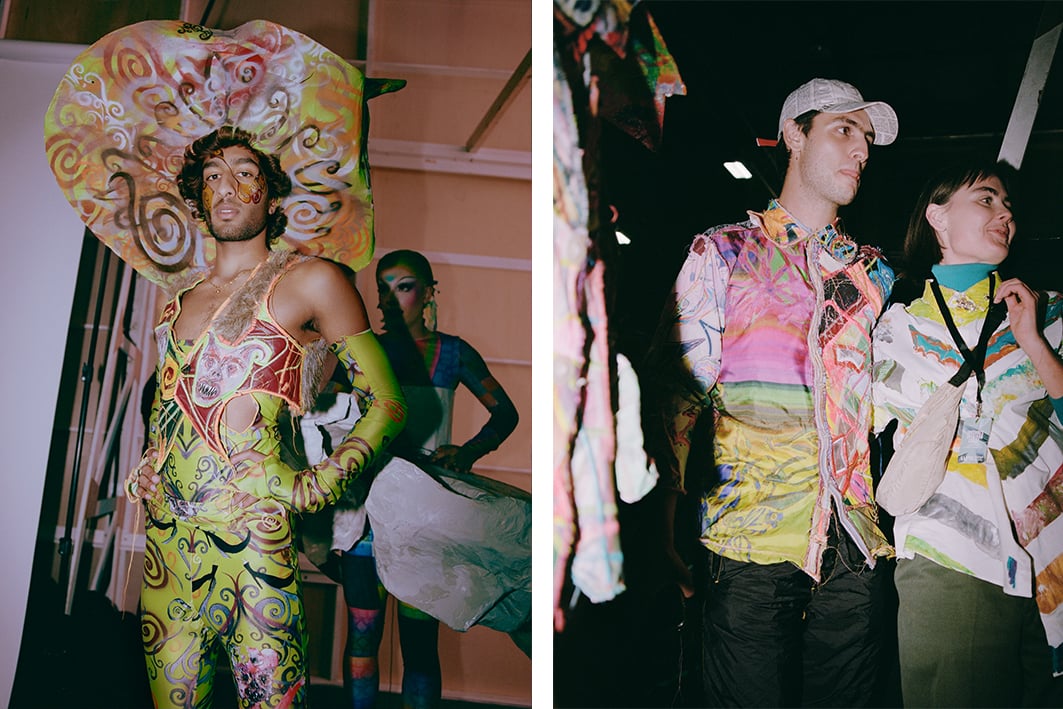
With a jubilant energy, riding on the coat tails of the success of the show, we ask Gogos, what is next? In addition to taking over the windows at Parlour X, the answer, is an installation at the Powerhouse Museum, which has acquired a lot of the wearable artworks; and a commitment to create consciously and ethically, in whatever iteration that means for the designer. How does he want to be remembered when all is said and done? "I'm a human. I've got a family. I've got a little brother who's 10. I want them to remember me as this person who gave fashion another chance. I just did my best. I did my best."



